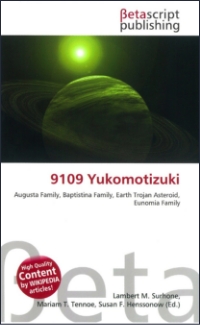ホーム > 進行中・過去のプロジェクト
進行中・過去のプロジェクト
課題番号:GR098
「南極氷床コアからさぐる過去2千年の太陽活動に関する分野横断的研究」
期間:2011年2月-2014年3月 事後評価:S
本研究では、南極大陸の日本の基地「ドームふじ」にて掘削されたばかりの新しい氷床コアに対して、太陽活動の新しい指標になると我々が考えている「硝酸イオン濃度」と、 気温の指標となることが雪氷学上で既に確立されている酸素同位体比(質量数の異なる酸素18Oと16Oの量の比)等を分析し、過去 2000年間の太陽活動とその気温変動との関係を探究する 実験的・理論的研究を推進しています。
詳しくはこちら
*《最先端・次世代研究開発支援プログラム》は、将来、世界の科学・技術をリードすることが期待される潜在的可能性を持った研究者に対する研究支援制度です。総合科学技術会議において決定され、日本学術振興会によって予算管理されています。政策的・社会的意義が特に高い先端的研究開発を支援することにより、中長期的な国の科学・技術の発展を図り、持続的な成長と政策的・社会的課題に貢献することが目的とされています。
本研究課題は、「気候変動研究における重要課題を対象にした研究」として、採択されました(総合科学技術会議及び日本学術振興会の審査委員会による<研究課題に対する所見>より引用)。
詳しくはこちら
Summary of Research Activities:
Our Astro-Glaciology Research Group promotes both experimental and theoretical studies to open up the new interdisciplinary research field of astro-glaciology, which combines astrophysics and glaciology.
On the experimental side, we analyze ice cores drilled at the Dome Fuji station, in Antarctica, in collaboration with the National Institute of Polar Research (NIPR, Tokyo). These ice cores are time capsules. In particular, the ice cores obtained at Dome Fuji are known to be unique because they contain much more information on conditions in the stratosphere than any other ice cores recovered from other locations in either hemisphere. This means that there are significant advantages in using Dome Fuji ice cores if we wish to study astronomical phenomena of the past. Since gamma-rays and high-energy protons that are emitted in certain astronomical processes affect the chemical and isotopic compositions in the stratosphere but not those in the troposphere, we have been measuring:
- (1) Variations in the nitrate ion (NO3-) concentrations in the ice cores, in an effort to establish a new proxy for supernova explosions in our own galaxy as well as past solar activity.
- (2) Variations in the water isotopes (18O and 2H) in the ice cores, in order to construct in more detail records of past changes in the temperature of the surface of the earth; and
- (3) Variations in the nitrogen isotope (15N) in the nitrates contained in the ice cores, in order to investigate the possibility of utilizing 15N as a new and more stable proxy for galactic supernovae explosions and past solar activity.
In the case of items (1), (2), and (3), our analyses of Dome Fuji ice cores cover the most recent 2000 years. The temporal resolution of the results of our research is currently 12 months. We intend to compare the results obtained in item (1) with those in item (2), in order to understand better the relationships between solar activity and long-term changes in the temperature of the earth. The underlying assumptions in item (2) are already well accepted in glaciology. Item (3) refers to one of the very first measurements of 15N concentrations in ice cores.
On the theoretical side, we are simulating numerically:
- (4) Changes in the chemical composition of the stratosphere induced by gamma-rays and/or high-energy particles emitted from explosive astronomical phenomena, such as galactic supernovae and solar proton events; and
- (5) The explosive nucleosynthesis (including the r-process, the rapid neutron capture process, which creates elements heavier than iron) that arises in the environment of core-collapse supernova explosions.
Items (4) and (5) in our list, the chemical composition of the stratosphere and explosive nucleosynthesis, are very important in solar-terrestrial research and nuclear astrophysics; furthermore, these simulations provide a theoretical support when considering the characteristics of supernova explosions and solar activity, as seen in our ice core data. These studies are also important because it is necessary to discount the effects of the meteorological noise.
It is noteworthy that the as yet not fully understood frequency of supernova explosions in our galaxy is crucial to an understanding of the r-process nucleosynthesis. The results obtained from items (1) and (3) are expected to reveal the average rate of supernova explosions in our galaxy during the past million years of ice deposition.










